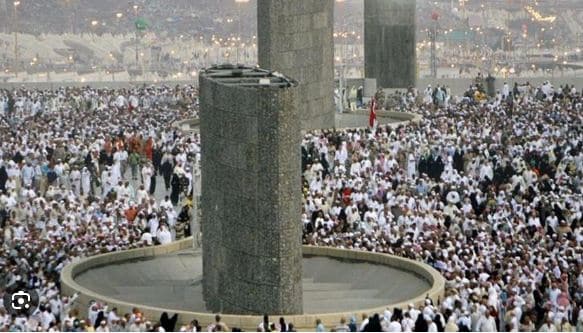Hundreds of thousands of worshippers wearing robes took part in the “stoning of the devil” ritual as the largest Hajj pilgrimage since the start of the pandemic concluded in Saudi Arabia. In the holy city of Mina, Muslim pilgrims threw stones at three concrete structures representing Satan before heading to Makkah for the final ritual of circling the sacred Kaaba, known as “tawaf.” This year’s Hajj had over 1.8 million participants, making it the first unrestricted pilgrimage since the COVID-19 outbreak in 2020, although it fell short of the record-breaking attendance of 2.5 million in 2019.
Despite the intense Saudi summer heat, with temperatures reaching up to 48 degrees Celsius, the faithful persevered. Helicopters monitored the crowded streets of Mina, while the Grand Mosque in Makkah was filled with pilgrims congratulating one another on completing the rituals.
The lower-than-expected turnout may be due to the extreme heat and the cost, which amounts to around $5,000 per person. The majority of pilgrims, over 1.6 million, come from more than 160 countries worldwide.
King Salman of Saudi Arabia extended well wishes to the nation, Muslims, and the world, expressing his commitment to provide sacrificial animals for nearly 5,000 of the neediest pilgrims. The stoning of the devil also marks the beginning of the three-day Eid ul Adha holiday, during which Muslims commemorate Prophet Ibrahim’s (AS) willingness to sacrifice his son by purchasing and slaughtering livestock.


